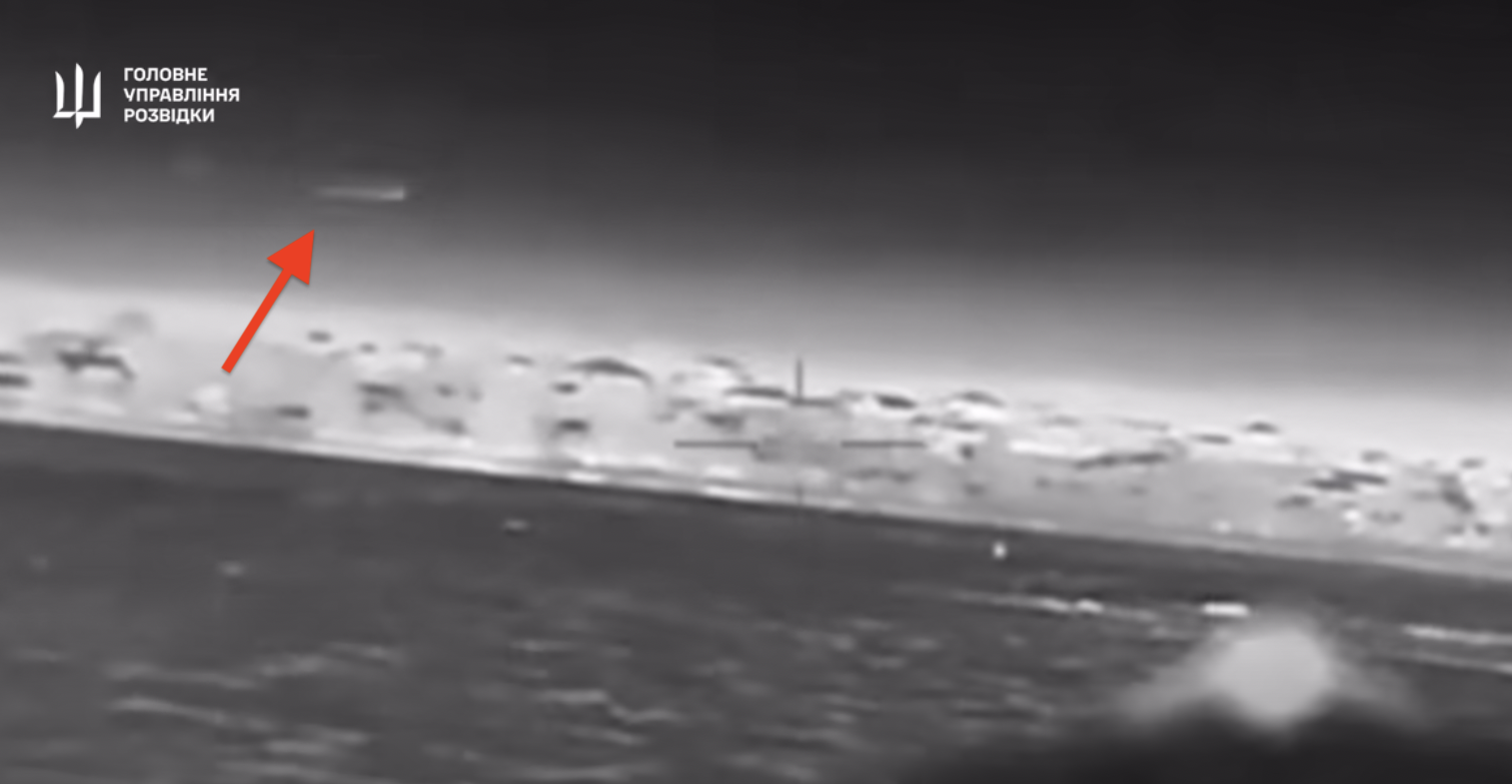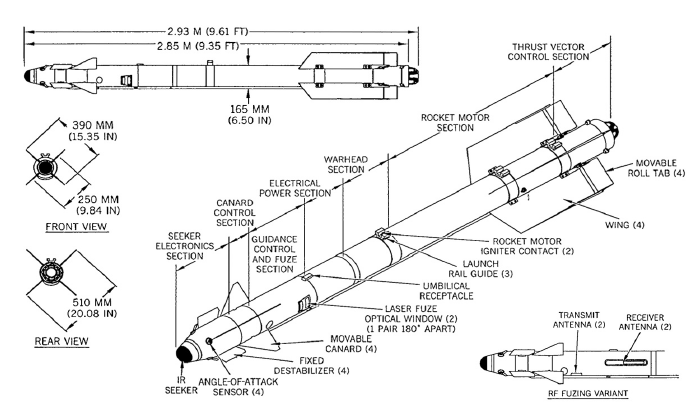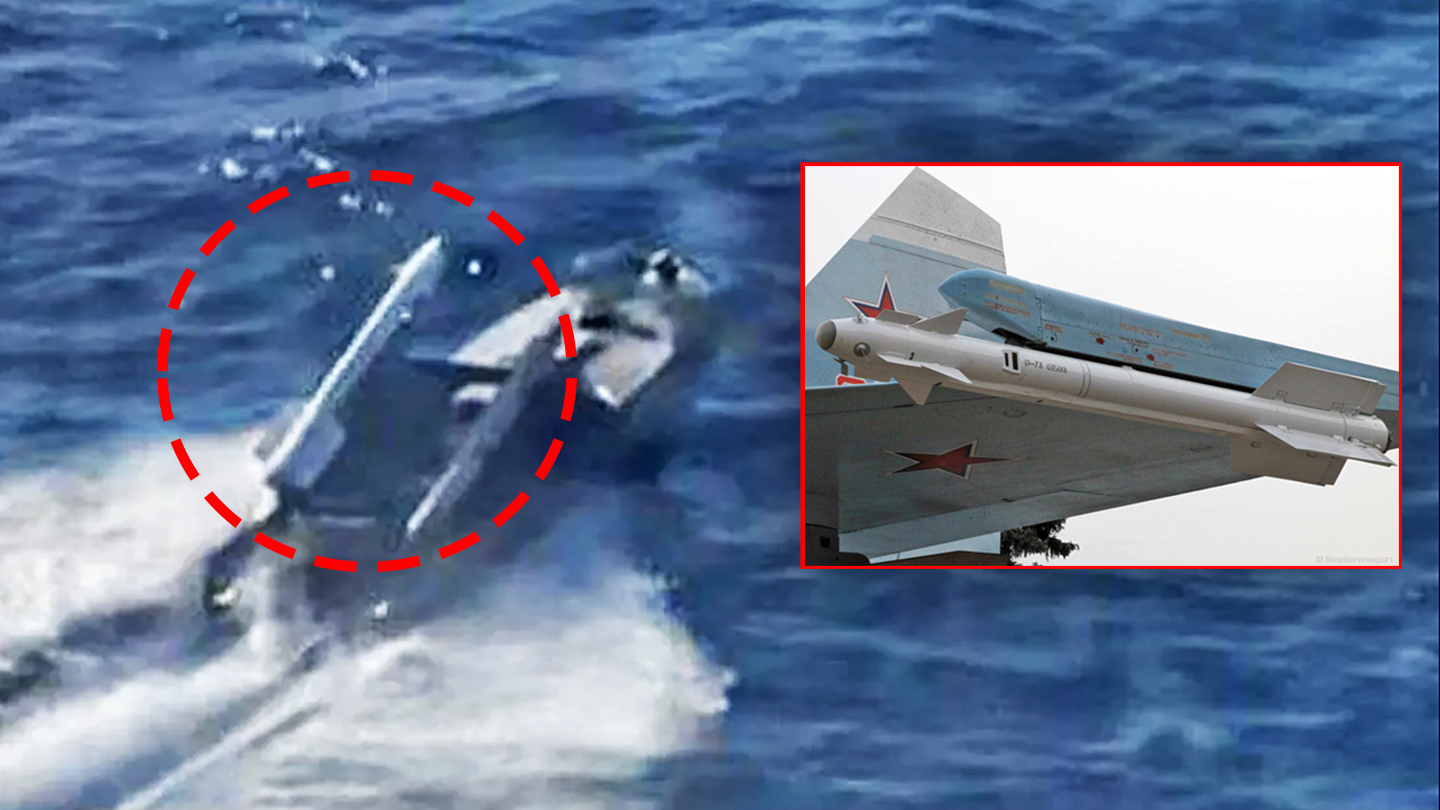In a most unusual development in the Black Sea ‘drone war,’ Ukraine appears to have begun arming uncrewed surface vessels (USVs), better known as drone boats, with heat-seeking air-to-air missiles. The adaptation seems to have been made to provide the USVs with protection against the Russian helicopters and fixed-wing aircraft that are increasingly being used to counter them, although many questions remain about how these newly added weapons are intended to work and just how practical the arrangement is.
Videos released by the Russian Ministry of Defense show what is said to be a Ukrainian USV armed with an infrared-guided R-73 (AA-11 Archer) short-range air-to-air missile coming under attack from a Russian Navy Ka-29 Helix-B assault helicopter. The USV performs some hard maneuvers to try and escape the Ka-29 but is eventually destroyed, apparently by gunfire.
A video taken from the Ka-29 reveals a single R-73 on one of two angled rails mounted on the rear of the USV, suggesting that the other weapon has already been fired. The Russian account claims that the other missile was launched in an unsuccessful attempt to bring down a Russian Mi-8 Hip helicopter. The fact this engagement played out in daylight suggests that the drone boat may have deliberately been used as ‘bait’ for these helicopters.
This is the first evidence we have of drone boats armed with R-73 missiles, but there are also reports that older R-60 (AA-8 Aphid) air-to-air missiles, also with infrared guidance, have been adapted as USV armament. On Telegram, the pro-Kremlin Fighterbomber military channel claims that the air-to-air missiles don’t require any radar or separate targeting systems to be used in this way. Simply, their seeker heads are used to acquire an aerial target, with the signal to fire presumably being provided via the existing command link that controls the USV.
In a post today, the same source claims that USV-launched air-to-air missiles have not yet been employed in combat, but that they pose a risk to Russian helicopters in particular, which it says are the most effective counter to the Ukrainian USVs.
The imagery and reports of this new surface-to-air armament on Ukrainian drone boats emerged on the same day that Ukraine reported using Magura V5 USVs to conduct a successful attack on a Russian naval target.

The Ukrainian Ministry of Defense’s Main Directorate of Intelligence (GUR) announced that a V5 of the Ukrainian Group 13 unit destroyed “an enemy speedboat” today. The GUR published a video of the apparent attack, which took place overnight in Uzka Bay in Russian-occupied Crimea.
A GUR official said the Russian vessel was a Project 12150 Mangust, as used by the Russian Border Service, with a reported price tag of more than $1.3 million. Other accounts suggest the vessel may have been a Swedish-designed IC16MII assault boat.
“As the fear of Ukrainian attacks forces the occupiers to hide the large ships of the Black Sea Fleet away from the peninsula, combat work continues against the high-speed maneuverable warships of the Russians, which are illegally in the Ukrainian territorial waters of Crimea,” the GUR said.
The GUR also pointed to the continuing success of the Magura V5 drone boat, which it says was responsible for the destruction of the Russian Navy ships Cesar Kunikov, Ivanovets, Sergei Kotov, Akula, and Serna, as well as inflicting damage on the Ivan Khurs. While some of the claims for vessels being outright destroyed may be questionable, there is an abundance of evidence that Ukrainian USV operations are playing a major role as part of a broader asymmetric campaign to hit targets inside Russian-occupied areas and Russia itself.
It’s unclear if any of the drone boats involved in the Uzka Bay attack — Russian sources claim that five USVs were used — were fitted with defensive missiles. However, it’s noteworthy that the GUR video appears to show debris falling into the water, suggesting that something may have detonated in the air. At the 0:48 point in the video, a long pale-colored object is seen falling into the water, apparently the approximate shape and size of one of these air-to-air missiles.

At this stage, we don’t know if there is any direct connection between the appearance of a USV outfitted with adapted air-to-air missiles and the engagement overnight in Uzka Bay, but it’s worth considering.
TWZ has approached the GUR but they declined to comment at this stage.
In general, however, there are several precedents for air-to-air missiles being adapted for surface launch, both as anti-aircraft weapons and even for the bombardment of ground targets. The Yemen-based Houthi militants, in particular, have adapted R-73s for surface launch against aircraft targets, and used them in combat, as you can read about here.
While there are accounts of drone boats in the past having been fitted with man-portable air defense systems (MANPADS) this would appear to be the first time that a USV has been equipped with an air-to-air missile in this way.

Potentially, the development is significant.
As a high-off-boresight (HOBS) weapon, the seeker on the R-73 can articulate in any direction much farther than a traditional heat-seeking air-to-air missile with a fixed seeker that stares directly forward. Aided by a helmet-mounted sight, the Archer can be launched in air-to-air engagements against targets with off-boresight angles of +/-75 degrees. This gives the R-73 the potential to be a particularly potent, albeit improvised threat for locking onto and engaging dynamic targets with minimal assisting sensors when used in a surface-launched form. Clearly, Ukraine has also developed a way of using this HOBS capability remotely to ensure this weapon is effective at all. The Houthis used a commercial FLIR as part of their ground-launched Archer adaptation.
Ukraine appears to have extensive stocks of R-73s (and likely also the older R-60s) and the hot engines of a nearby helicopter should make a good target for their seeker heads. Even if the probability of kill is not especially high, and the overall range of the missile markedly reduced, the risk posed to rotorcraft is such that it may force them to operate further from the drone boats. This would render their primary machine gun armament ineffective, as well as the rockets and anti-tank guided missiles that they could otherwise be armed with.
As it stands, the effectiveness of the newly added anti-aircraft missiles on USVs remains to be seen although it reflects the willingness of Ukraine to experiment with new and unorthodox military solutions — and to introduce them rapidly when required.
However, it is a very interesting development that points to the rapid pace of change in the Black Sea drone war, as well as the continuing game of cat and mouse between Ukraine’s USVs and the Russian assets assigned to defend against them.
Contact the author: thomas@thewarzone.com
